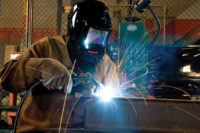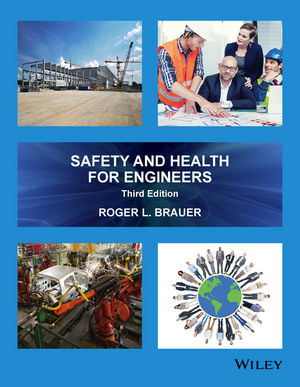Steel curtains block flying debris from hydraulic presses
Striking out

The potential for catastrophic injury when operating a hydraulic press is great. Its operation requires a worker to feed, position and remove stock in the area under the powerful ram or near the bending point, exposing him or herself directly to danger. Each year an estimated 250,000 industrial workers are struck by ejected debris such as metal chips, nails, broken cutters, blades, tools and dislodged grinding wheels from a variety of different machines.
Because of the tremendous force of a press, parts ejected from it have led to countless serious eye, head, and bodily injuries. Metal fragments, slivers, piece parts and blocks can be dislodged and dispersed at great speed, striking the press operator or bystanders. These types of accidents typically occur when job parts are not aligned properly during setup. As a result, the job part may be squeezed out or ejected when under tremendous load. Stock may also fracture, sending shrapnel into the work area, piercing skin and underlying tissues. Each year an estimated 250,000 industrial workers are struck by ejected debris such as metal chips, nails, broken cutters, blades, tools and dislodged grinding wheels from a variety of different machines.
Role of ejection curtains
Steel mesh ejection curtains were originally intended to protect people in the vicinity of a bomb blast. Today they have become a safety solution for hydraulic presses, namely Arbor and H-Frame presses. Rather than having a work piece that fractures, slides, rolls or ejects to become a high-speed projectile, the curtain’s interlocking wire coils act as individual springs that absorb kinetic energy, expanding and stretching in a predictive and repeatable way. The holes in the material allow pressure to go through the mesh while stopping or slowing the flying debris by wrapping around it and dropping it to the floor without ricocheting back towards the press, thereby reducing the potential for striking the operator.
Ejection curtains have gained popularity since they offer access during normal operations, as well as for press maintenance. Being mesh, the curtains are flexible and simple to push out of the way during loading, positioning or removing work pieces, unlike with traditional fencing or solid metal barriers. Additionally, the mesh curtain allows visibility while the press is in operation. Curtains are typically secured at the top on a pipe suspension assembly and hang free at both sides and the bottom, providing easy access to the machine.
Methods for risk reduction
Although ejection curtains are not classified as guards, they do act as an awareness barrier for powered presses to reduce exposure to the point of operation and also act as a containment barrier to stop or slow projectiles ejected from the machine. For powered presses, this product meets the ANSI B11.2 ref 8.2.1. “flying objects” clause, pending results of the risk assessment to determine the likelihood and force potential for throwing objects (note, a “shield” does not need to be a hard guard).
Platen presses, stamping presses, transfer presses, and in some cases forging presses require barrier guards or devices, which prevent access to the point of operation over, under, around or through the guard itself. For these applications, an ejection curtain does not meet these criteria as it is a movable barrier and does not have to be in place to operate the press.
Case study
Facility managers at Canada West Harvest Centre are aware of the necessity to install safety guards around machines in order to avoid injuries from pinch points or projectiles.
Canada West Harvest Centre is a CLAAS agricultural dealership, selling and servicing the full line of CLAAS equipment for Southern Saskatchewan. At three separate Canada West Harvest Centre locations, Gray SP-25 heavy-duty shop presses with a 25-ton capacity are utilized to service components of CLAAS agricultural equipment. Canada West Harvest Centre relies on ejection curtains to help protect its machine operators and surrounding personnel.
Looking for a reprint of this article?
From high-res PDFs to custom plaques, order your copy today!









